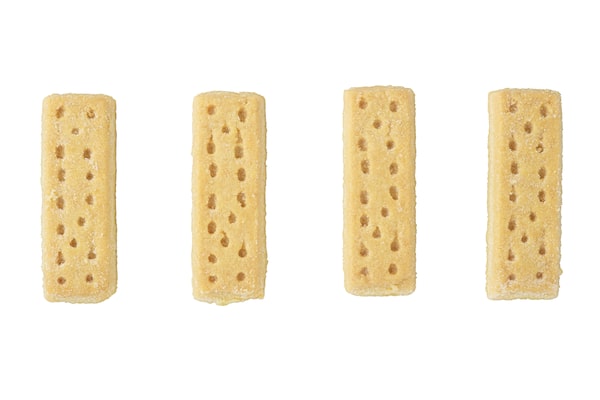
rgbdigital/iStock
When it comes to shortbread, I have deep prejudices. I grew up in Scotland, with wonderful, crumbly, buttery shortbread. It was a treat all year round but especially at Hogmanay (New Year’s Eve), a much bigger holiday than Christmas there.
Shortbread’s history dates back at least five centuries. It was often large round discs notched at the edges to represent the rays of the sun. Scottish legend says Mary, Queen of Scots named shortbread “petticoat tails,” probably a variation of the French “petites galettes,” or small cakes.
Ingredients are key to making the best shortbread. I use unsalted butter; it has less water, which makes for a superior biscuit. Giving the sugar a couple of turns in the food processor makes it finer, resulting in a better texture. I also add some organic rice flour, which helps to make a crumblier, mouth-rich shortbread. Bob’s Red Mill, available at most supermarkets, is a good brand.
What tools do you really need in the kitchen – and which can you do without?
The best shortbread is made by hand because it is easier to judge the dough’s texture. Butter and sugar are creamed together, then the flours, sifted together, are added slowly. If you make a larger batch, cream the butter and sugar together with an electric mixer and then beat in the flour with a wooden spoon.
Brown sugar can be used, but it is not traditional. Baking should be slow so that the sugar does not burn. If you like it crisper, then bake a little longer. Shortbread takes to flavours such as ginger, chocolate chip, grated orange or lemon rind, chopped nuts, cardamom. There is never vanilla in shortbread.
My recipe is passed down through our family, which gives a lovely sense of history and connection to the women who made it before me.
Traditional recipes call for a 3:2:1 ratio, or 3 cups flour, 2 cups butter, 1 cup sugar (processed finer). I add ½ cup rice flour for texture and a pinch of salt. The following recipe makes about 30 cookies.
Cream the butter and sugar together until creamy with an electric mixer. Gently beat in the flour until just incorporated (or use a wooden spoon, which is more traditional but harder).
The dough should be pliable and firm, but not crumbly. Divide in half and roll each half into about a ½-inch thickness on a floured board. Chill dough for 15 minutes. With a lightly floured 2-inch cookie cutter, cut out rounds. The cookies will spread so space them an inch apart. Prick each cookie all over with a fork.
Place on ungreased cookie sheets and bake in the centre of the oven at 300 F for about 25 minutes or until creamy coloured but not brown. If you like a crisper cookie, rather than a softer one, bake 5 minutes longer. If you want thicker cookies, they will take longer to bake.
Cool 5 minutes then remove to a wire rack. Sift all over with granulated sugar, if desired.
Need some advice about kitchen life and entertaining? Send your questions to lwaverman@globeandmail.com.
 Lucy Waverman
Lucy Waverman